It’s the start of a new academic year, and we are ready to pilot a new, home-grown PYP Transdisciplinary Unit Planner. I tweeted about it, and a few people were curious to see the full planner and also hear more about the process we went through.
So here it is!
The Backstory
Last year our faculty spent a lot of time doing individual reflections driven by the new IB Standards and Practices. We then took all the individual reflections and mapped it out to try and identify collective areas of growth. One of our biggest areas where teachers self-identified that they were “developing” or “approaching” was using a planner based on the PYP planning process in all subject areas. So we saw this is an opportunity…
The Process
Our first step was to pull together a “task force”. Myself and the principal I work with strongly believe in teacher voice and shared decision making. This was a little tricky last year – as we were smack-dab in the middle of a global pandemic – but we still wanted to at least put it out there for those teachers who were interested and felt they could donate some time towards this project.
So in February of last school year, we advertised the “task forces” in our Morning Message.
From there got together initially and got on the same page. We laid out our purpose and the process we would follow.
First, we clarified that the PYP Enhancements require that we follow the PYP planning process, but don’t require that we use a specific planner.
We were clear about our mission.
And we laid out our predicted timeline for the work and the related steps.
Week 1
We started by ensuring we had a shared understanding of both the IB Standard & Practice driving our work, as well as the PYP Planning Process that came from the PYP Enhancements.
Week 2&3
Next we started to explore different options. Everything from what we had been previously using or had used in the past at our school, the PYP Sample Planner, and some that other PYP educators around the world had share. We started out with and individual analysis of each and then synthesized our pros and cons.
Week 4
Finally it was time to work towards a decision. So we individually reviewed the collective pros and cons from previous weeks for each planner we analyzed and each put forth some recommendations.
Then it was time for me to take those recommendations and build a mock-up. Which I did…
Next it was time to take it back to the task force to “tune” it. I used an adapted version of the SRI Tuning Protocol to facilitate that process with them.
Then I went back and made the changes that came from the warm and cool feedback.
I am very fortunate to have two colleagues, one who has a magical eye for aesthetics and the other who is ninja-level when it comes to Google Slide design work and they took my basic – and let’s be honest ugly planner – and turned it into a work of art!
That brings us to where we are today. We have “finished” the unit planner and are ready to try it out! My original plan was to slowly roll it in to the collaborative work I do with each team, but I with work so many amazing risk-takers, a few teams are piloting it right out of the gate of the new school year!
The “Final” Product
Here is it, accompanied by a few words about how we plan to use it!
The planner is broken up into 7 sections:
- prologue
- initial reflections and pre-planning
- single-subject integration
- ongoing reflection, design and implementation
- final reflections
- “other slides” (as needed by the team)
- appendices
Section 1: Prologue
The title side allows teams to document: the Transdiscplinary Theme, the timeline and the collaborative team contributing to this specific Unit of Inquiry. It also has linked tabs at the top to allow for shortcuts to the different sections of the planner. You also may notice a teeny, tiny little PYP document along the right side. Throughout the planner we have embedded qucklinks to certain sections of the PYP documents that pertain to that specific element or guidance for that part of the process. In this instance, it takes team to the guidance about the different approaches to unit timelines in the PYP Enhancements.
Next there is a slide that reinforces the approach to planning at our school. All planning is driven the by PYP planning process and we do that by delicately balancing 4 things: thinking of our learners, acknowledging what is going on in the world at the time, keeping our finger on the pulse of past learning and consulting our learning outcomes.
When teachers are “considering past learning” they are taken to another risk we are launching this year called Learner-Centered POIs.
This allows them to see their learners’ POI across the years they have been at the school. It has a screen shot of each year’s POI for that cohort as well as a summary of articulation points, such as the TD theme, key concepts, Learner Profile Attributes, Related Concepts and ATL skills to date. This allows them to always keep vertical articulation in mind, but in a living, breathing, emergent and responsive way.
Section 2: Initial Reflections and Pre-Planning
Initial Reflections and Pre-Planning is broken into 3 steps. The first one is focused on the 4 balancing factors I mentioned above that inform our planning. This culminates in a decision about the TD theme as well as the descriptor that will be the primary focus within that theme. Again you will notice in the top-right corner, a shortcut to sections in Teaching and Learning that support this process.
One of the things from the IB sample planner that the whole task force loved, were the guiding prompts. However, they felt embedding the guiding prompts into the planner itself can make it too long and often feel daunting. So we decided to embed guiding prompts as pop-outs when and where needed.
Step 2 of this sections is focused on getting the learners involved in the co-construction of the units and also the finalization of what we have come to call the “big bones” of the unit.
Again there are some guiding prompts for this step that are hyperlinked.
Step 3 of this section is beginning to think about approaches to teaching and assessment.
You may notice this section has many hyper links throughout that support teachers to reference other helpful documents for this stage of the thinking, such as a guide for inviting students into the planning.
Section 3: Single-Subject Integration
Single-subject integration at any PYP school can be tricky. When multiple teachers from different disciplines are all working from the same planner, those planners can get massive and can become less workable. It also means that single-subject teachers may have up to 7 different planners on the go at one time! So we decided to try something out. We have the specialist subject planning linked, but in a different set of Google Slides. We also were inspired by Andy Vasily’s approach to different levels of integration, so we included a section where that can be very clear.
The links then go to that subjects’ planner where they can see any glance to what level they are integrated at the different grade levels and also space for planning that acknowledge’s their discipline specific needs. (This is also a new planner that was the product of a task force… but more about that later!)
Section 4: Ongoing Design and Implementation
One of the things we love about the PYP Enhancements is the big push to move away from planning a whole unit before you launch, and move towards more responsive and adaptive planning. This fits perfectly with our schools’ PLC and RTI processes. For every week that the unit lasts, teams can reflect on and document what the learners’ have revealed and how best they can respond.
Again, there are some additional guiding prompts for teams who need or want further guidance.
Section 5: Final Reflections
Finally, there is space to house the reflections that arise upon the completion of the unit with space not only for the teachers, but also for the learners to think about how the unit went.
And of course… some guiding prompts!
Section 6: Team Needs
One of the things that came strongly from the teacher voices in the task force was the benefit of having a place to add and embed other things beyond the systemitized part of the planner. This supports teams to have “everything in one place” and allows them to make it work for them.
Step 7: Appendices
The last few slides are some supplementary tools our teachers use such as conceptual rubric templates and provocation design templates so they are there and easy to find when they need them.
Next Steps
As I mentioned above, now that we have it built this year is all about piloting it. Those teams that are ready and willing have already jumped in. Those teams who aren’t ready quite yet, can begin to explore and experiment with it with my support when the time is right. Ideally by the end of the year all teams will have had some solid experience with it, to then be able to provide some feedback about how we can further refine and improve it for next year!
We also followed a similar process for our single-subject planner, stand-alone math and stand-alone literacy planner too!
I know many school around the world have gone through similar processes and designed their own unit planners. We would love to see and hear all about your process and planner, so please leave a comment so we can continue to learn and grow together as a global community.
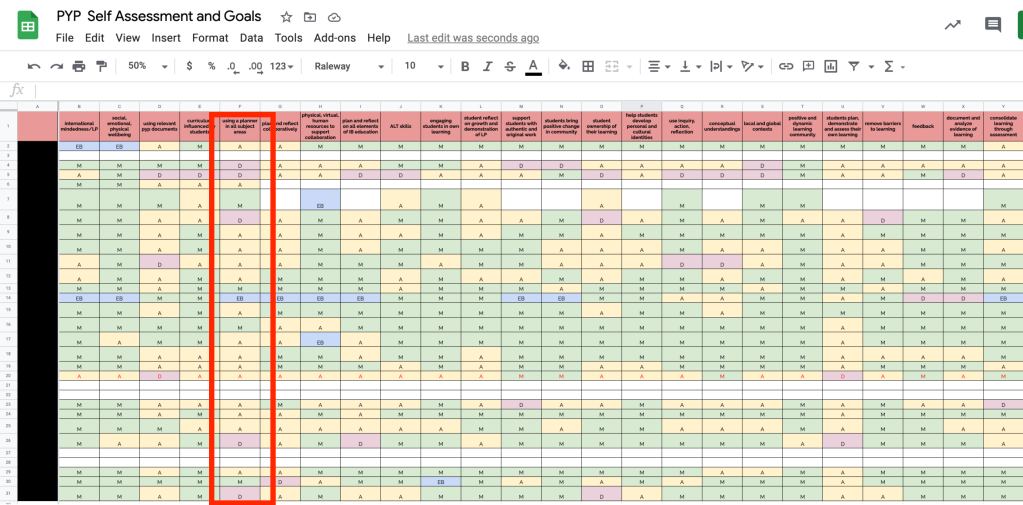
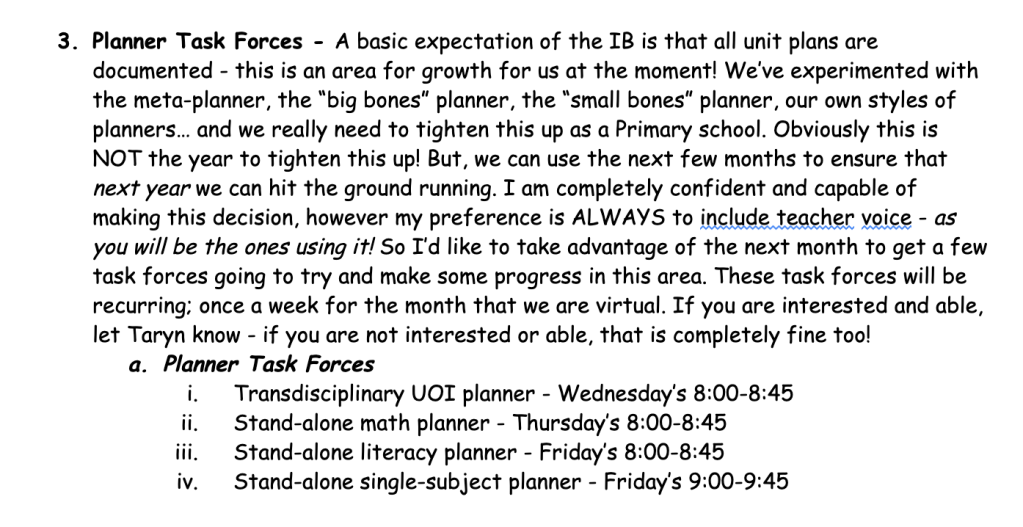
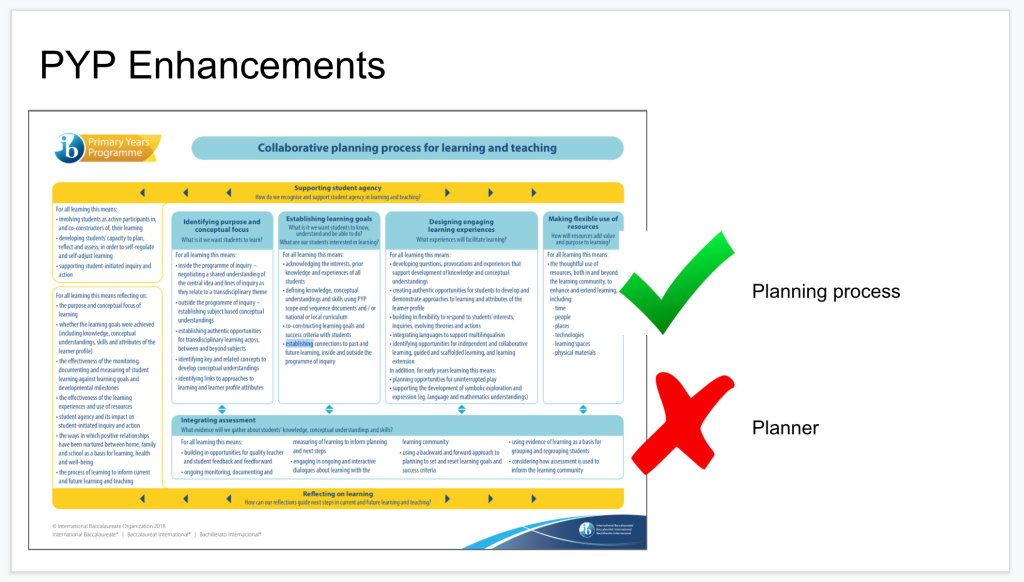
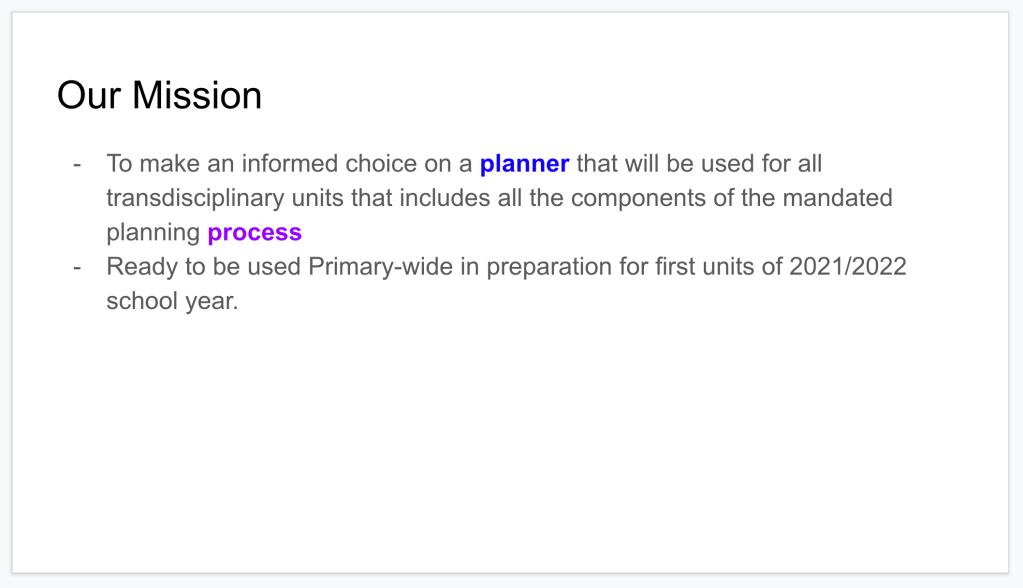

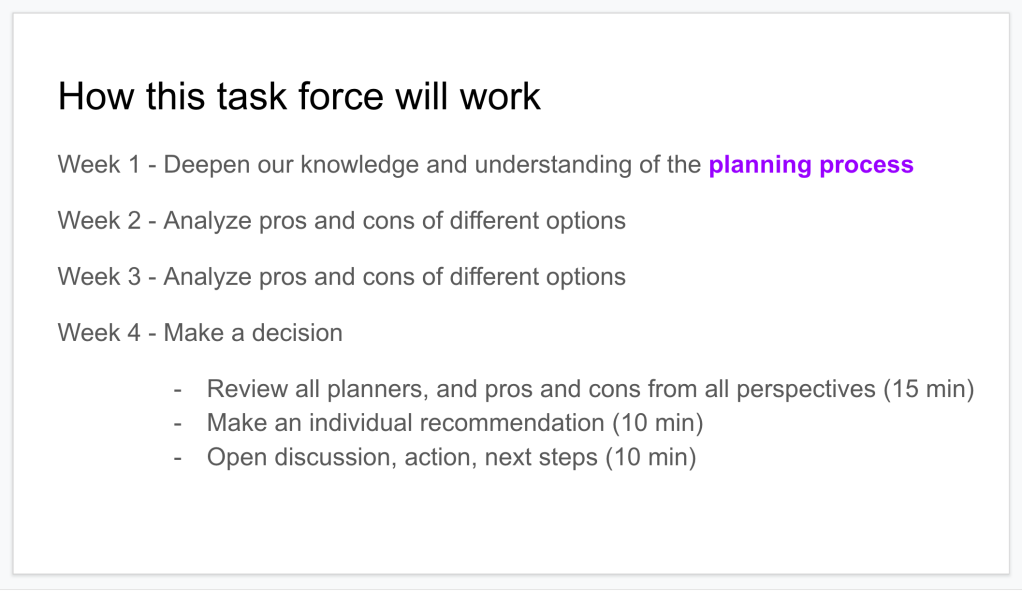
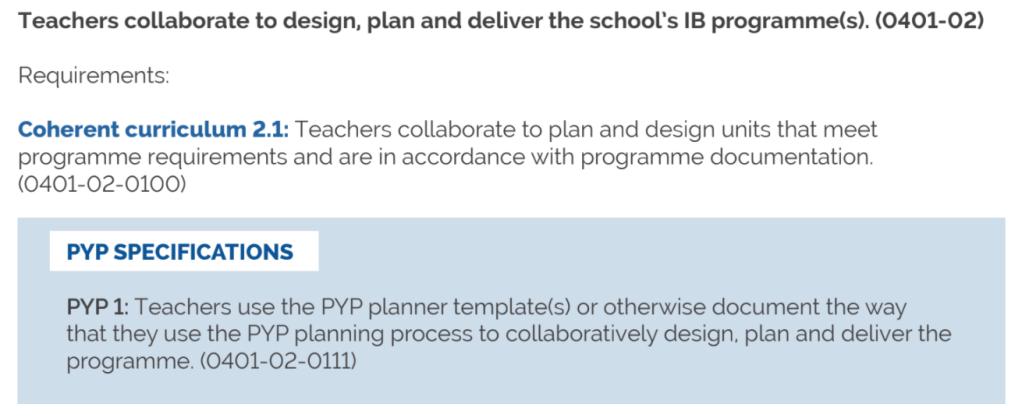
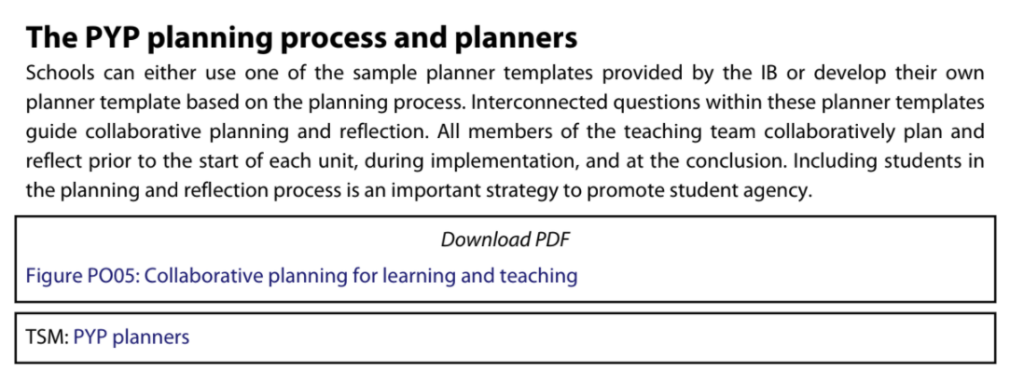

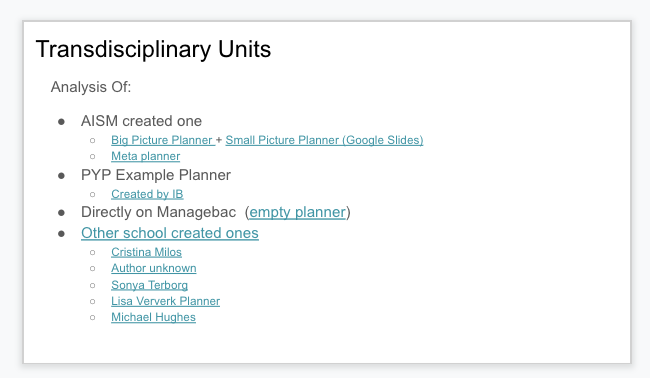
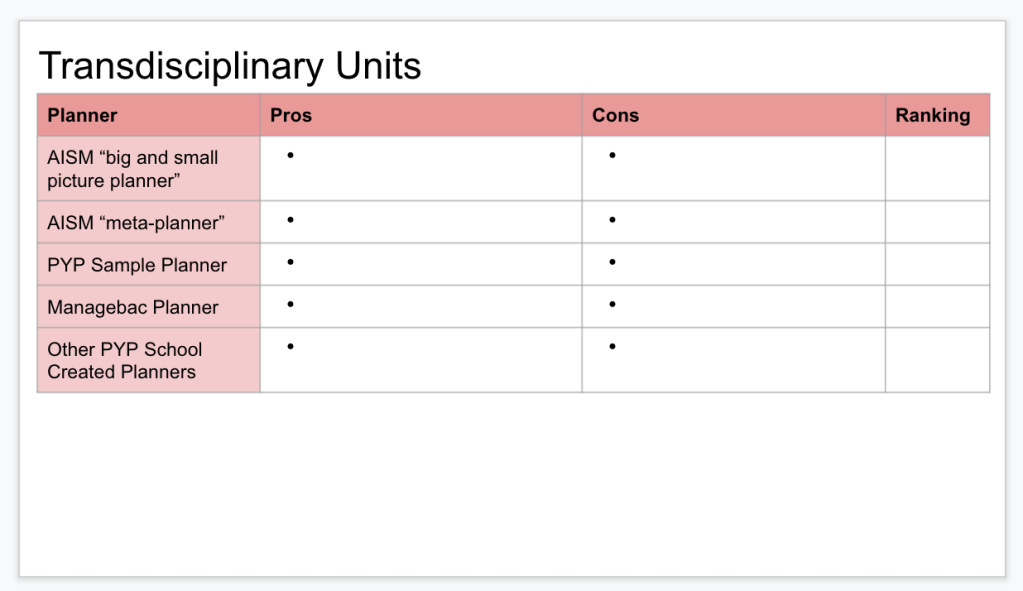
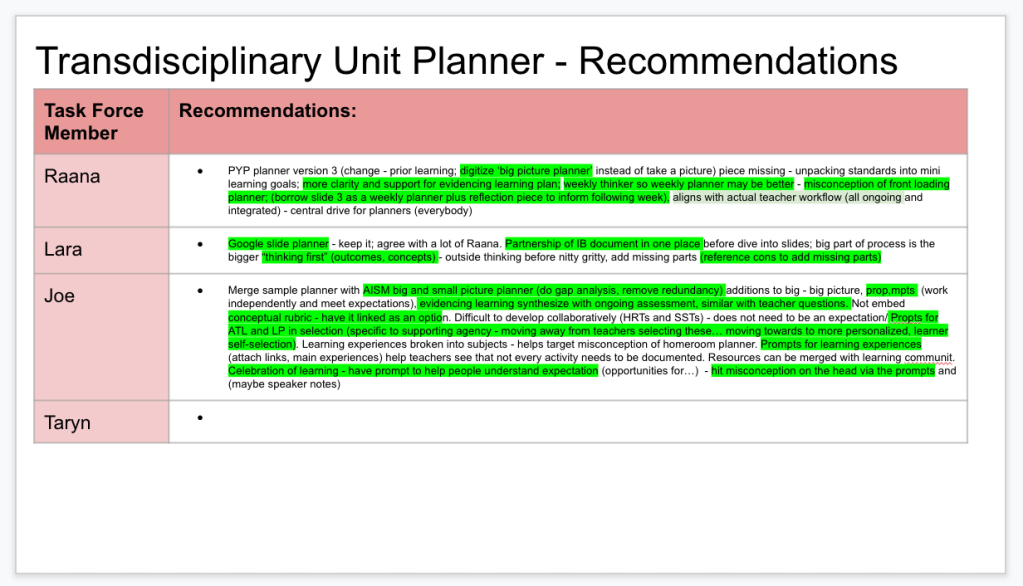
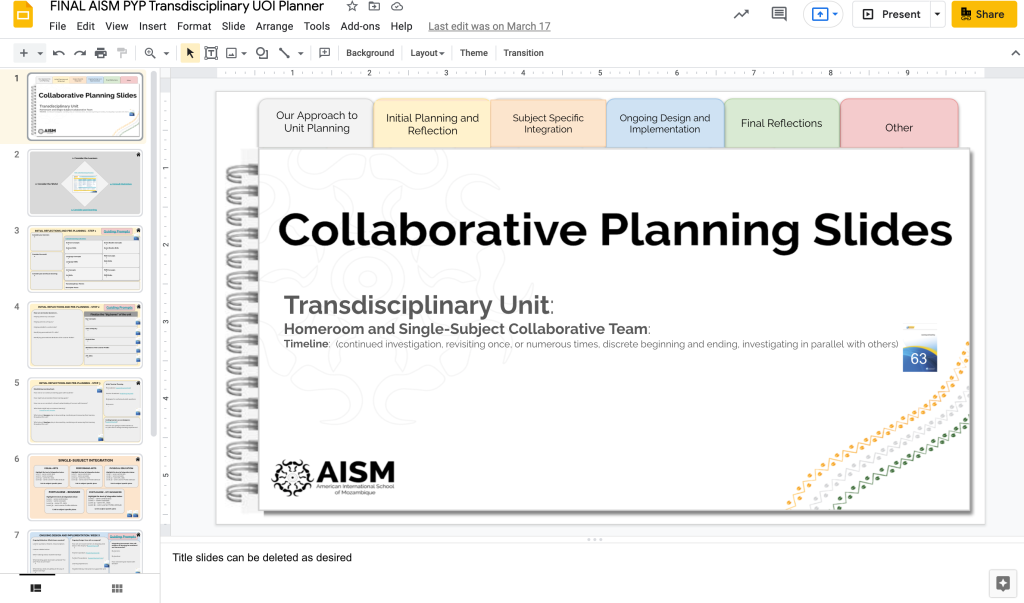

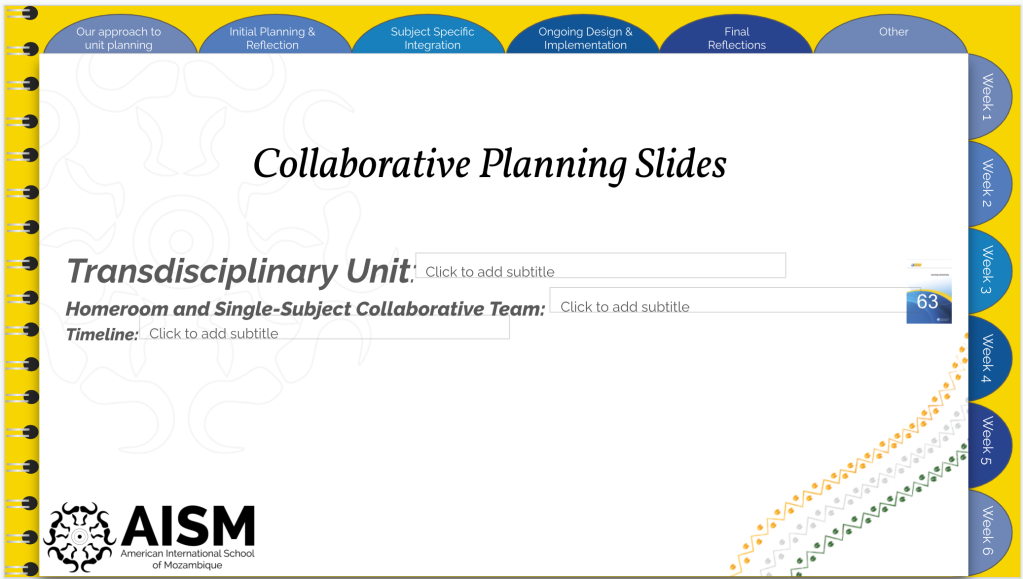
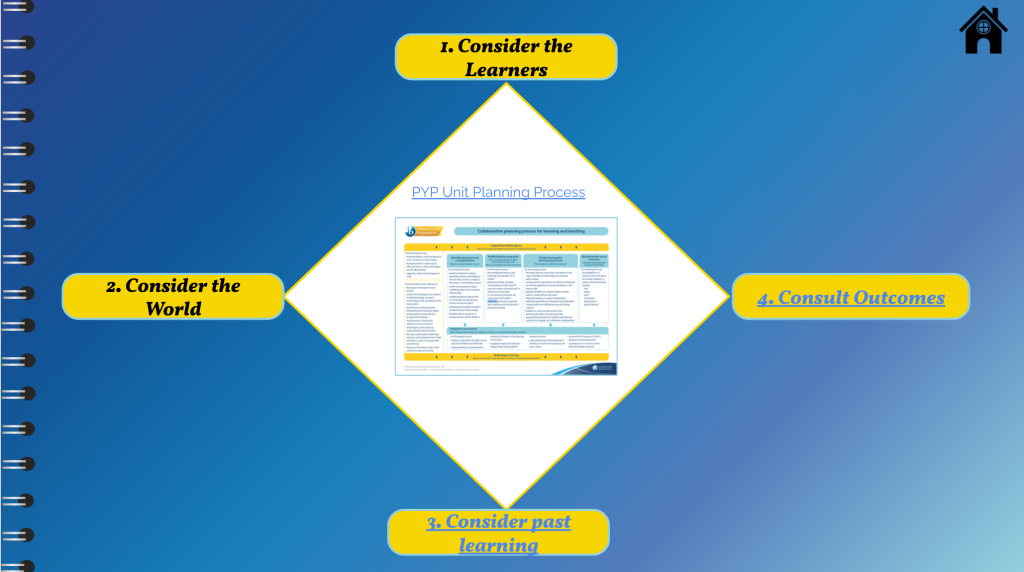

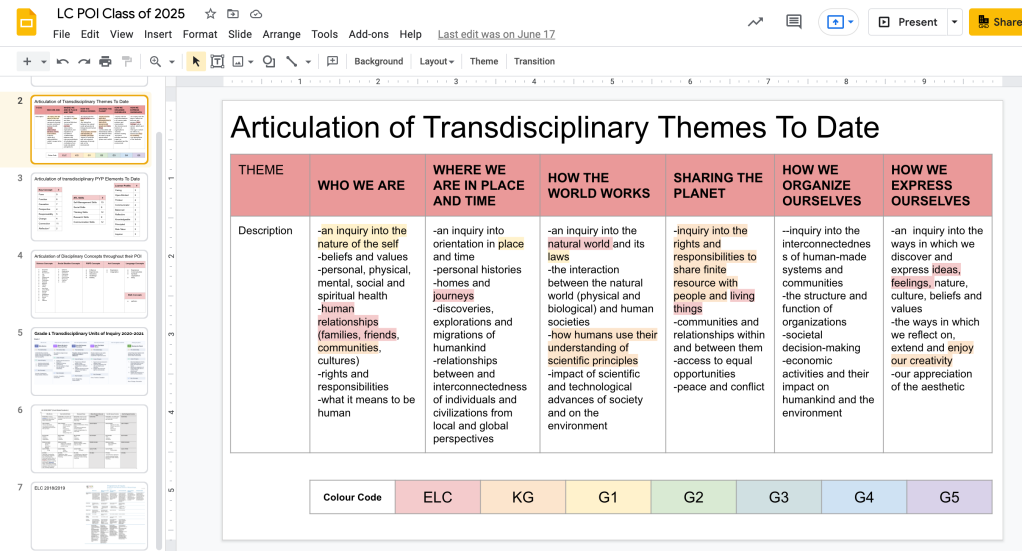
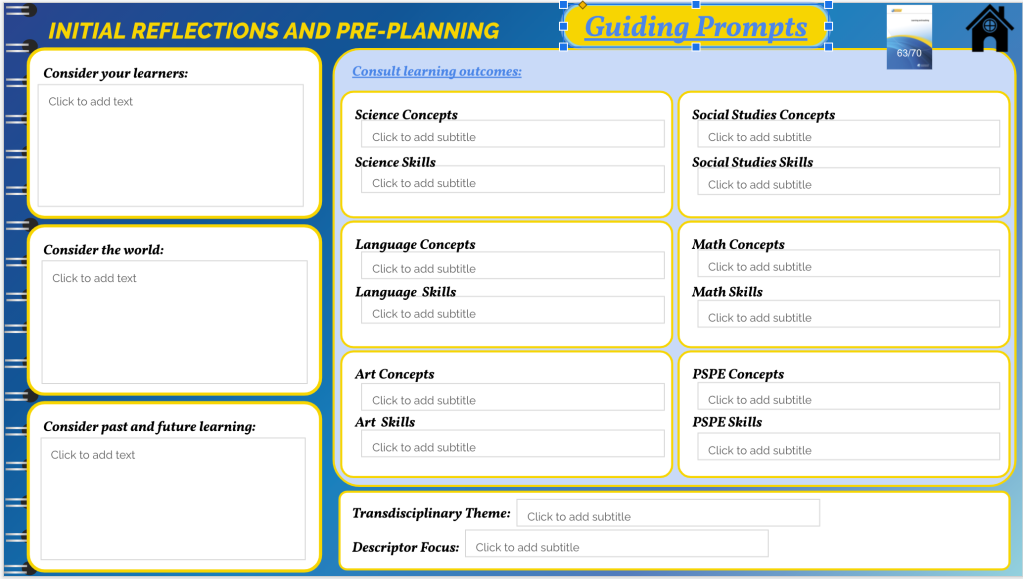
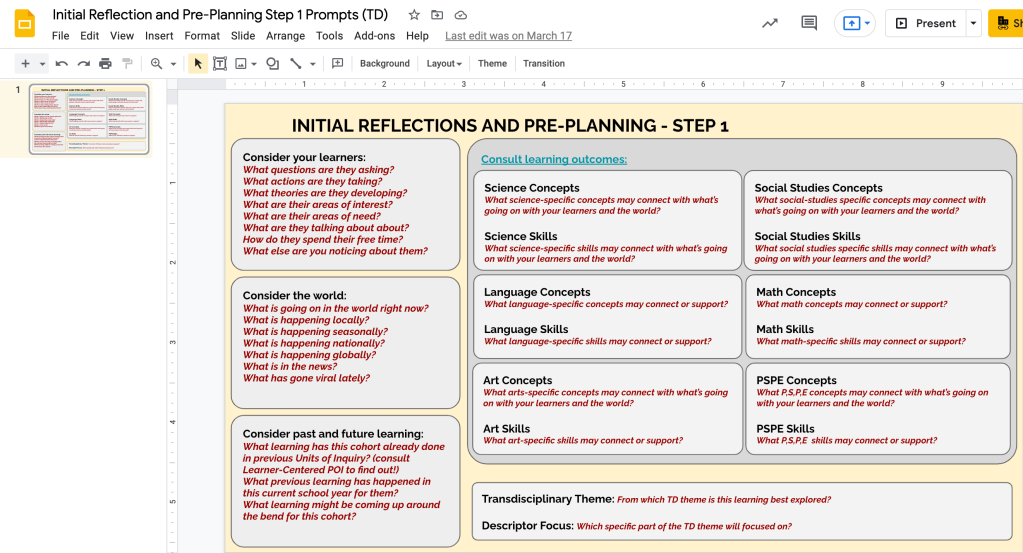
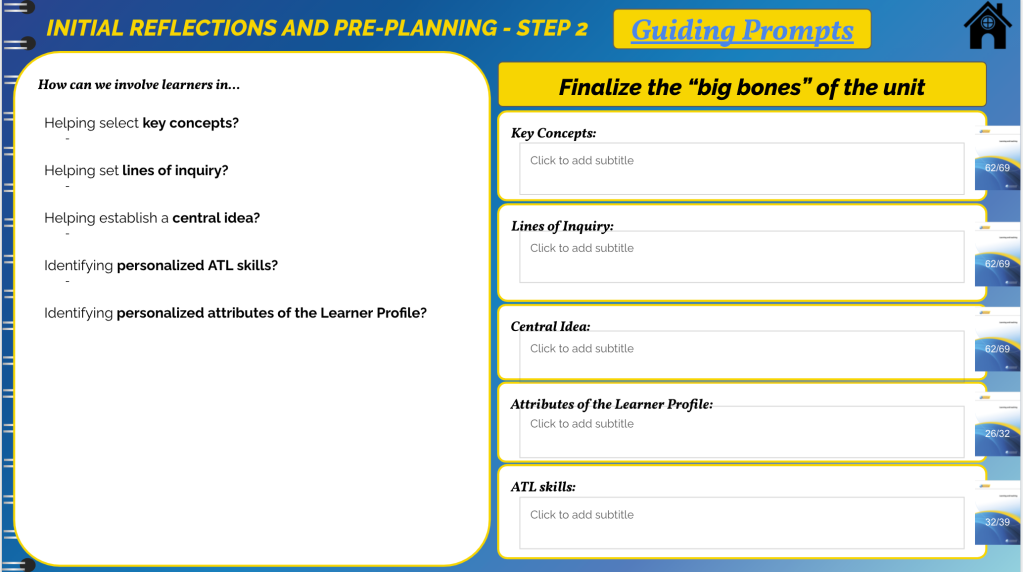
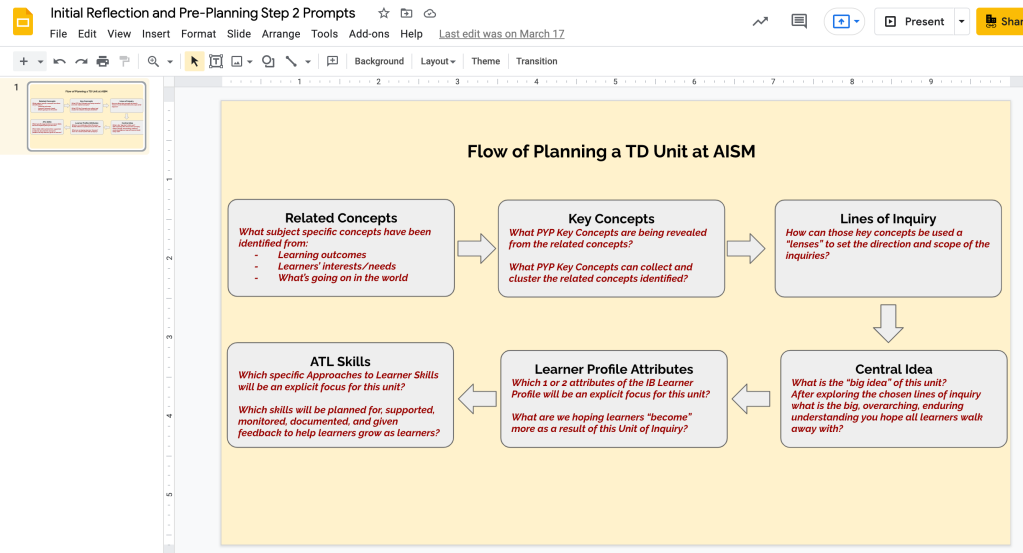



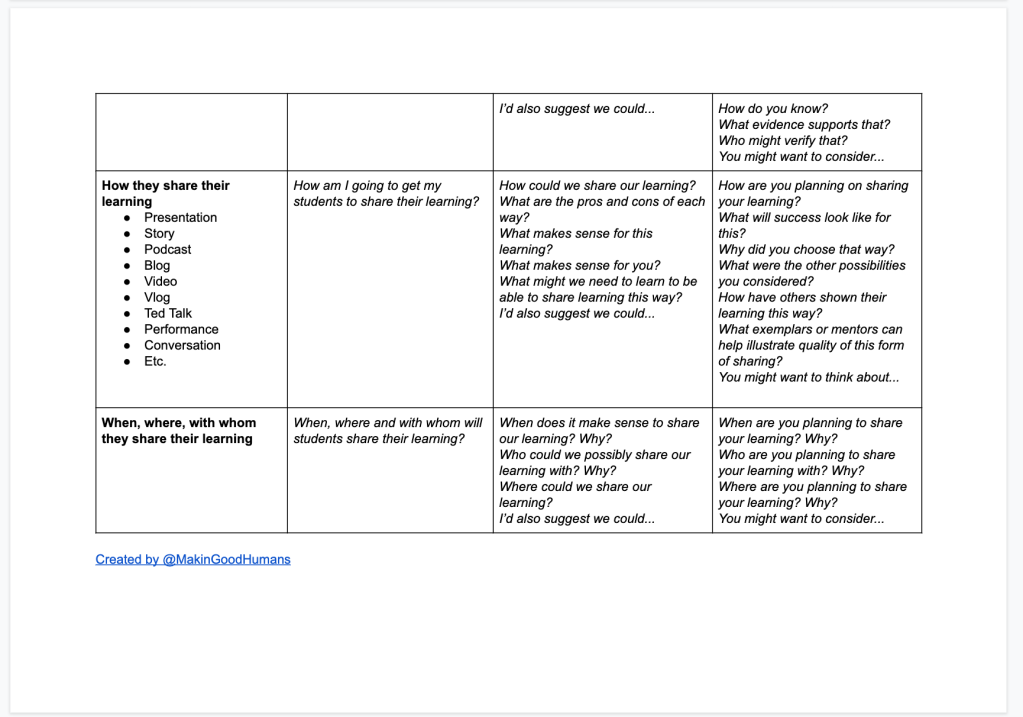
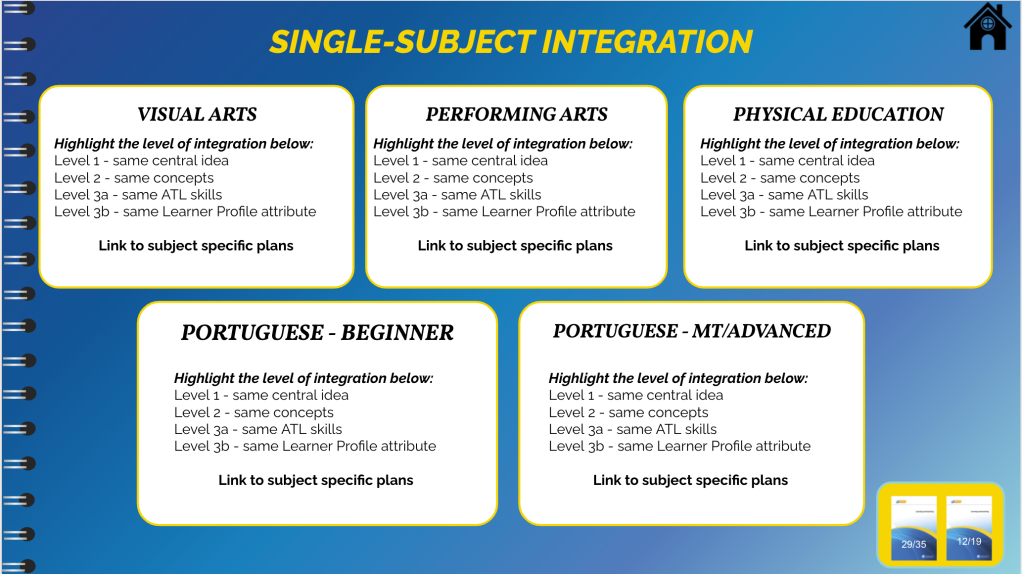
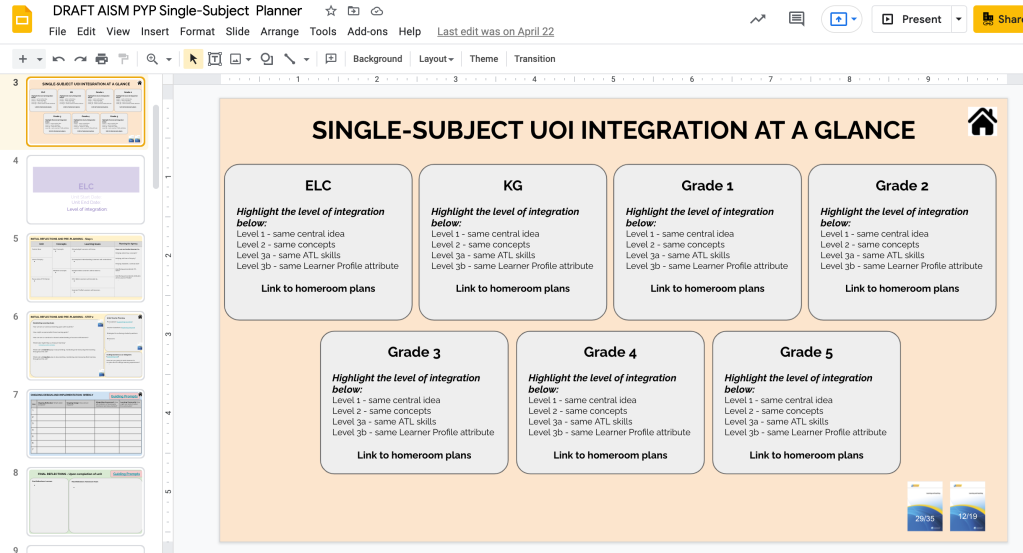
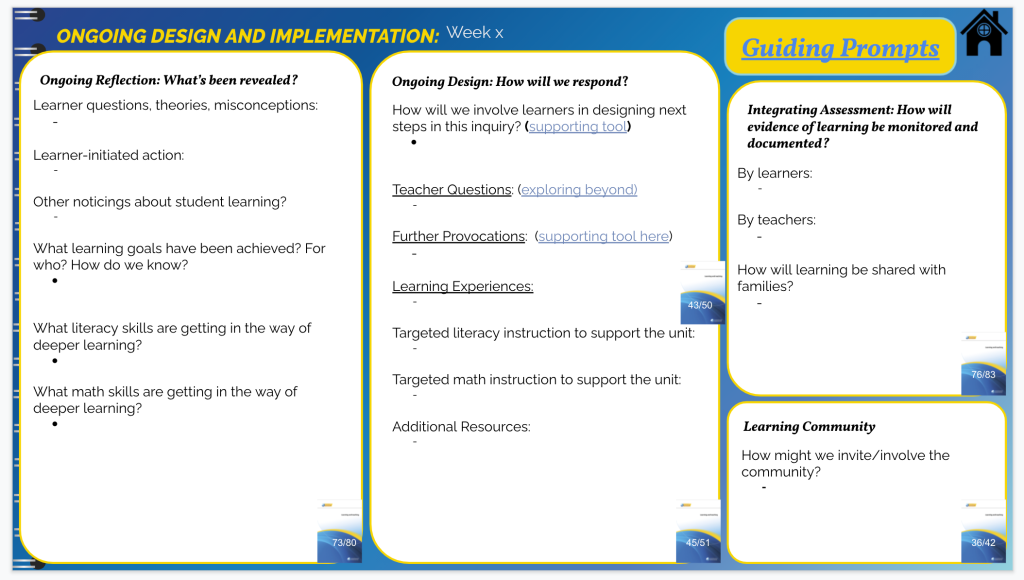
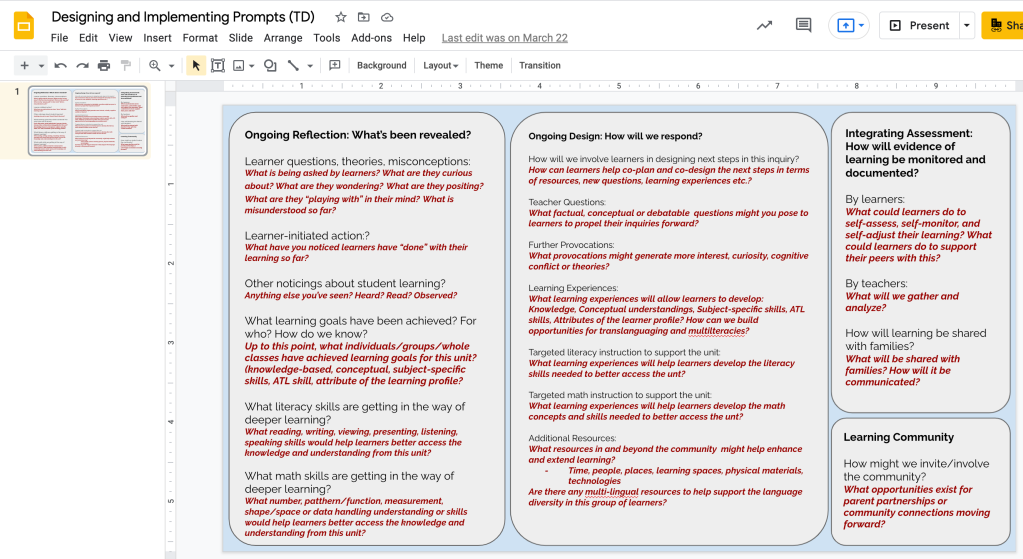
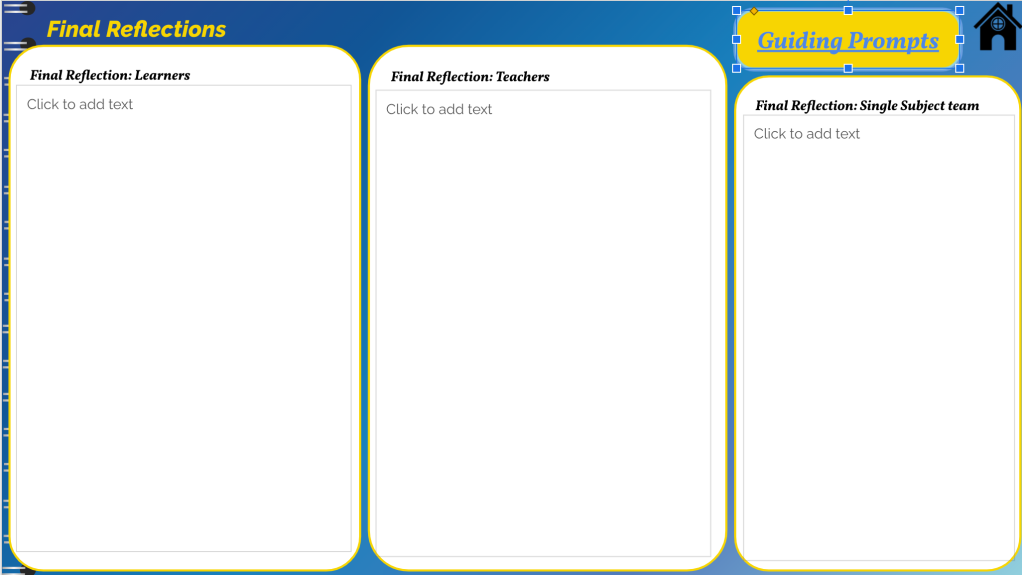

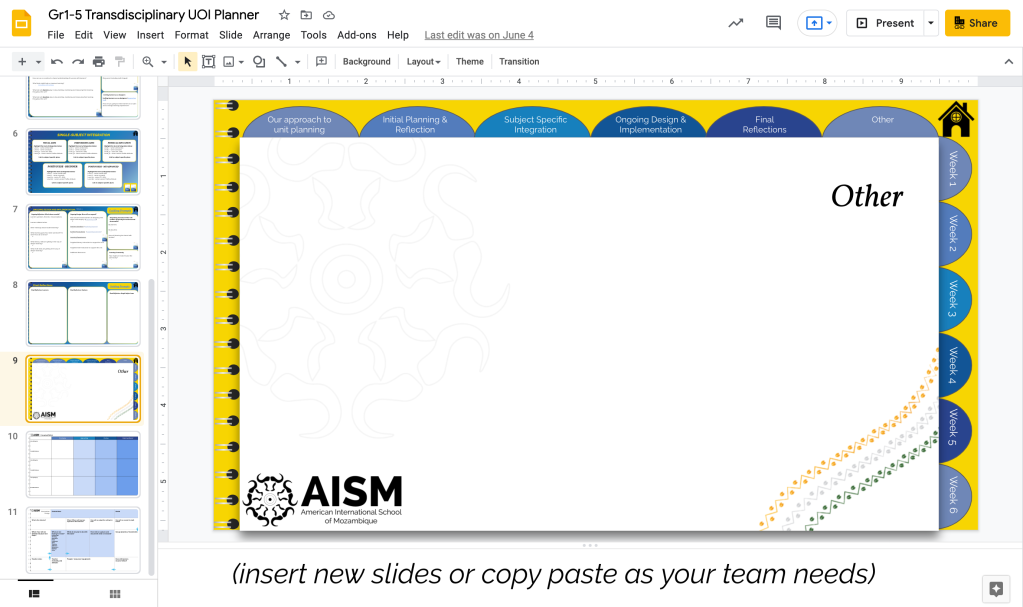
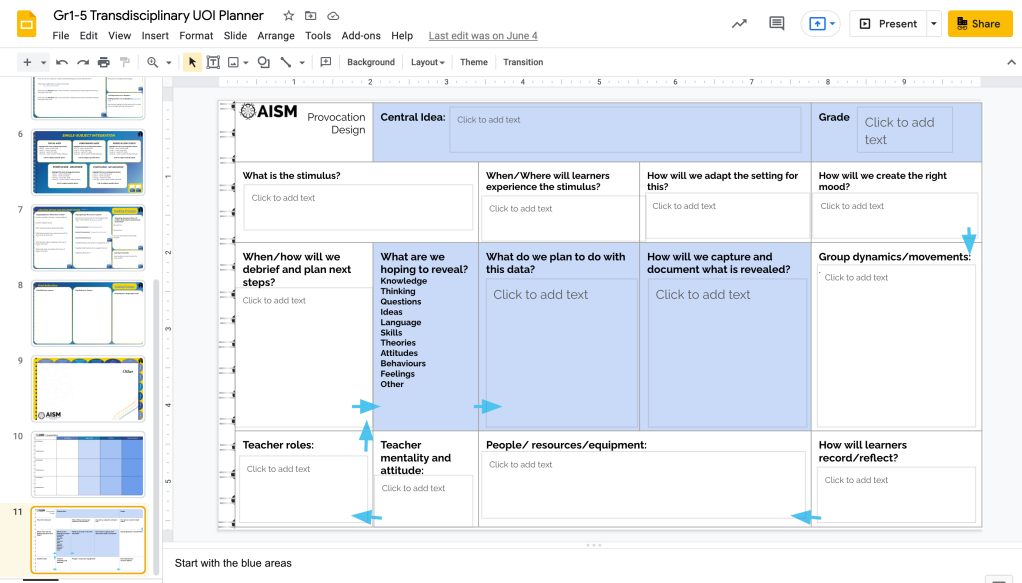
Hi Taryn, What an amazing, collaborative, context-driven planner! Wow! I think it’s going to be well-used and appreciated and I look forward to hearing about how things go! Well done to you and your crew! Christine 🙂
On Sat, Aug 7, 2021 at 10:26 PM Making Good Humans wrote:
> tbondclegg posted: ” It’s the start of a new academic year, and we are > ready to pilot a new, home-grown PYP Transdisciplinary Unit Planner. I > tweeted about it, and a few people were curious to see the full planner and > also hear more about the process we went through. So ” >
LikeLike